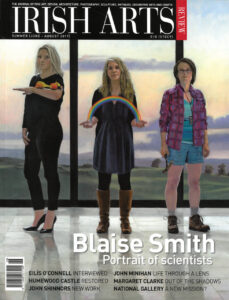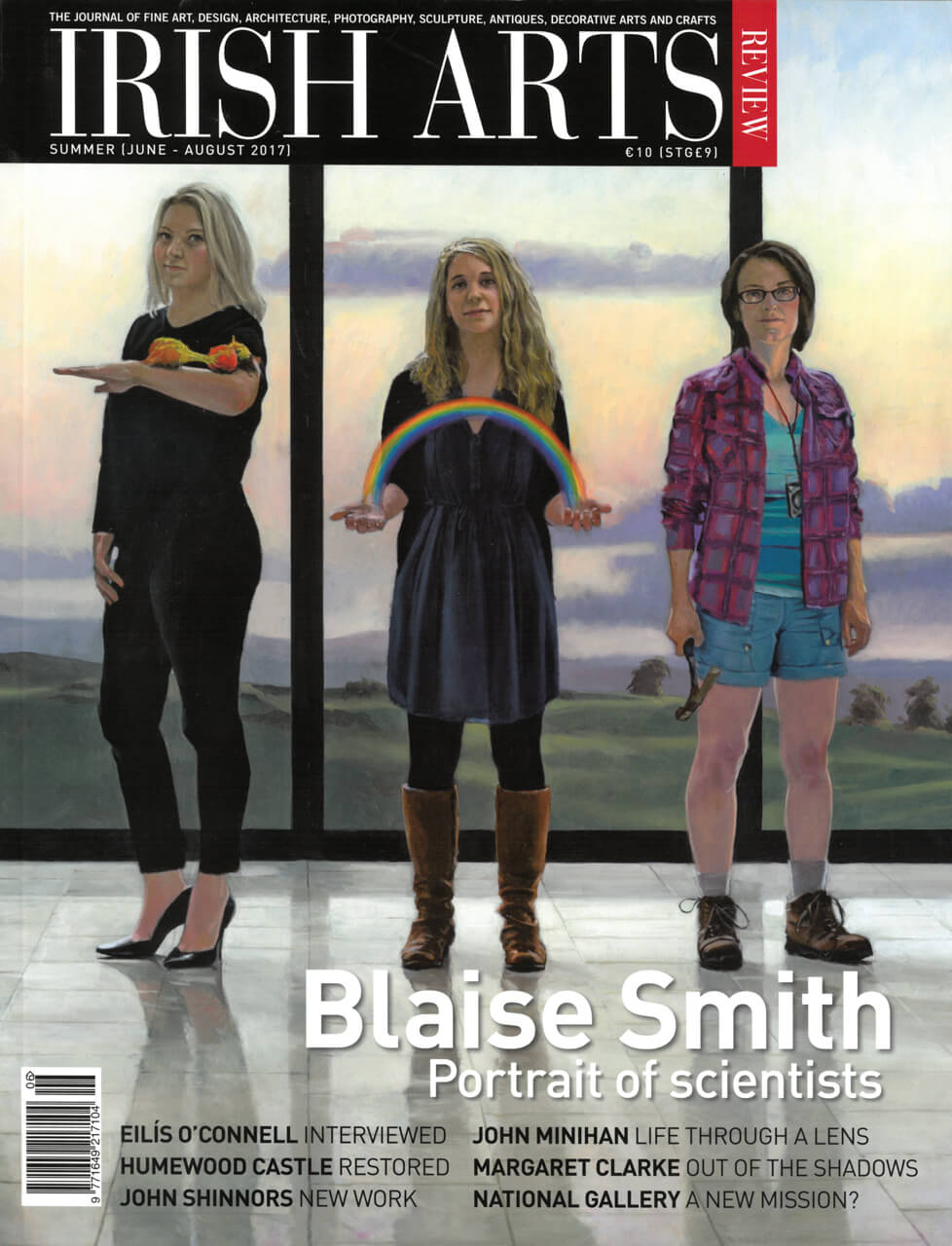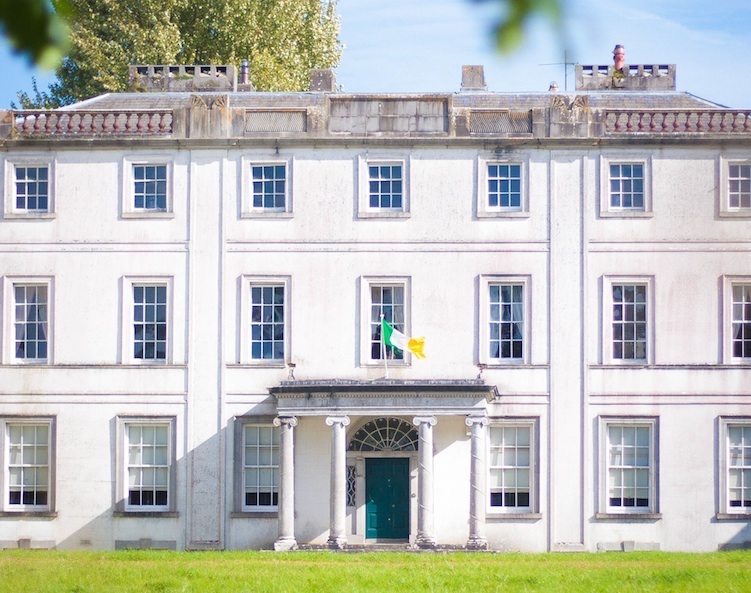

Frances McDonald traces the revolution in ceramic art as Ireland’s leading makers display their work at Farmleigh from June, marking the 40th anniversary of Ceramics Ireland
In 1970, the World Crafts Council (WCC) General Assembly took place in Dublin. The hosting of this major event in Ireland is generally acknowledged as a catalyst for Irish craft. Heralding a more structured and professional era for the sector, the Dublin assembly focused on the idea of craft as design for industry, a notion somewhat at odds with the WCC’s increasing engagement at that time with the art world. However, as design historian Eleanor Flegg has noted, ‘while many Irish makers aspired to use craft as a means of creative expression, the market for expensive art objects in 1970s Ireland was small. In contrast, there was an almost insatiable demand for souvenirs of reasonable quality and a tremendous amount of government support for production enterprises that looked as though they might, one day, create jobs’.1 Flegg, who has extensively researched this period in Irish craft, describes the sector at that time as being supported by ‘an unwieldy consortium of state sponsored and voluntary bodies’.2 The establishment of The Crafts Council of Ireland in 1971, was an attempt to coordinate these separate entities and while it would eventually secure government funding in 1976 and begin to establish itself as the voice of professional craft, it too faced many challenges in those early years. During this period the language of craft was evolving and the components of what we now recognise as contemporary craft were emerging. As Flegg has observed ‘activities once undertaken within a simple rural lifestyle became part of a contemporary practice, adopting the language and intention of art’3 and while some transformed effortlessly, others struggled. The work of David Shaw-Smith for the television series Hands and subsequent book Traditional Crafts of Ireland provide us with a wonderful chronicle of that changing time in our cultural heritage.
In Ireland in the 1970s, the ceramic industry was experiencing the same highs and lows of other craft disciplines. A number of the major potteries, such as Carrigaline and Arklow Pottery, were declining, however many smaller concerns were beginning to emerge and an influx of makers, primarily from the UK, helped fuell an interest in studio ceramics. This changing landscape is a reminder that the story of ceramics remains a complex one; like other genre of craft it has, as Paul Greenhalgh once observed, ‘moved through history, adapting, twisting, changing, accumulating and surviving extraordinary upheavals within the fabric of the societies it resides in’.4 By the mid 1970s most of the new wave of makers living and working in Ireland were creating domestic ware, some explored ceramics as art objects while many engaged in other activities to supplement their income. However, with makers scattered around the country and with the majority living in rural areas, it was felt that an association linking potters was needed and so The Craft Potters Society of Ireland (CPSI) was founded in December 1977. In reading issues of the society’s initial newsletters, there is a sense of an organisation finding its feet in those early years, wanting to communicate the ethos of its members, but still being a little unsure as to the nature of that communication. However we do get a glimpse of mutual concerns, a desire to learn, a willingness to share experiences but most of all, a sense of a group of individuals, brought together by their passion for, and commitment to clay and all its possibilities. The first newsletter, in 1978, notes that there were fifty members of the CPSI out of the ‘one hundred and twenty or so that were circulated’.5 Today there are just over 200 members in Ceramics Ireland6 – a large increase certainly, but still relatively small, considering how many are engaged in ceramic practice in Ireland and that membership is not limited to practitioners. Maybe the activities of Ceramics Ireland are not seen as relevant by some of today’s makers, or perhaps their continuing presence is taken for granted? After all, the chances of any organisation, which has survived for 40 years, continuing to survive are high. However I don’t think that Ceramics Ireland wish to just survive. From the early years of the Craft Potters Society of Ireland through to Ceramics Ireland, (believing that the original name did not fully represent the diversity of members work, the CPSI changed its name to Ceramics Ireland in 2005), what resonates most is not just their determination to succeed and to achieve but their desire to exceed expectations, to meet the challenges of an ever-changing environment, to be ambitious. As a membership-based organisation, funded annually by exhibition fees and commissions, fundraising workshops, but mostly through membership fees, Ceramics Ireland has achieved a tremendous amount in forty years; currently two annual members exhibitions take place, a biannual magazine is produced, a biennial international festival takes place in Thomastown, annual awards and bursaries are presented and international links are fostered. But in spite, or maybe because of this success, there is a continuing desire to do more, to encourage and enable makers to extend and expand their creativity.
This ambition is probably best illustrated by Ceramics Ireland’s triennial series, which began in 2011. Initiated, in part, by a desire to fly the flag for clay during the Crafts Council of Ireland’s Year of Craft, ‘transFORM’ sparked a greater awareness of the achievements of makers in Ireland and Irish makers abroad, bringing together the work of thirty-two ceramic artists in an exhibition that toured the island of Ireland. This was followed in 2014 by ‘CENTRED’ featuring work by thirty-five makers. Interestingly, the Irish Arts Review coverage at the time highlighted the exhibitions’ sense of reconnection (bringing together the work of makers living in Ireland with that of makers who had made careers abroad) and inheritance (identifying linkages between established and emerging makers).7 This year, the series continues with ‘Touchstone’, in Farmleigh Gallery which will include a display of archival material. While member exhibitions take place annually, including an open submission exhibition in which every entrant is guaranteed a place, the addition of these seminal exhibitions to Ceramics Ireland’s calendar of events has arguably been their greatest achievement. Capturing a moment in time in Irish ceramic practice, they both challenge makers and inform audiences. Although ‘CENTRED’ was timed to dovetail with the International Academy of Ceramics 47th General Congress in Dublin Castle in 2014 (a private viewing was held for the 200 international delegates with many commenting that it was their highlight of the event), neither it or ‘transFORM’ were exhibited outside of the island of Ireland. So while there is much to celebrate, there’s also a sense of an opportunity lost; that feeling that greater resources would have allowed the organisation reach international audiences, important collectors and galleries. Perhaps ‘Touchstone’ will get that opportunity?
There are, of course, many contributing factors to the success of Irish ceramics. The Design and Crafts Council of Ireland (DCCoI) continues to showcase work through various programmes and provides skills training. Other third-level courses continue to improve (in the face of financially challenging environments) and the establishment of the Irish Contemporary Ceramics Collection by the Hunt Museum and Limerick School of Art & Design helps define the place of ceramics within the hierarchy of the visual arts in Ireland. As a non-profit organisation, Ceramics Ireland has nurtured successful relationships with various partners over the years. DCCoI have provided exhibition opportunities at the National Craft Gallery while the support of Gus Mabelson, Course Manager of the Ceramic Skills and Design Training Course at Thomastown, Co Kilkenny has been invaluable. Ceramics Ireland greatly values the support given to them by Mary Heffernan and her team at the OPW who generously provide exhibition venues. Finally the opportunity to award bursaries and travel awards has been an important part of Ceramics Ireland’s commitment to rewarding excellence and building confidence; current awards are made possible though the support of Helena Brennan, Scarva Pottery Supplies, Gallery Zozimus, Blue Egg Gallery and Mill Cove Galleries mark the tenth anniversary of its Irish Ceramic Award this year.
Today ceramics existw in a complex and expanded field. According to Edmund de Waal ‘each generation has to feel the complexity and expansion of the field for themselves, turning away from the past, doubting previous generations abilities to renew the art of ceramics.’ Audrey Whitty, at the National Museum of Ireland, has cited the founding and development of Ceramics Ireland as an important contributor in raising the quality of ceramic art in Ireland, over the past decade which has witnessed a proliferation of artists in clay from Ireland at an international level. Long may it continue.
‘Touchstone’ Farmleigh, Dublin 16 June – 30 September 2017.
Frances McDonald is an independent writer, curator and project manager, specialising in in craft and design
1 Flegg, E., 2012. Transformation and Renewal: a cultural history of craft in late twentieth century Ireland. Unpublished PhD Thesis, University of Ulster. p. 66
2 Ibid. p. 70
3 Flegg, E., 2011. The Complexity of Time. In: Modern Languages: Reinterpreting the Irish vernacular. Kilkenny: The Crafts Council of Ireland
4 Greenhalgh, P. 2002. The Persistence of Craft. London: A&C Black Ltd., p.19.
5 Crowe, A., ed. Craft Potters Society of Ireland Newsletter. March 1978.
6 A search under ‘ceramics’ on the Design and Crafts Council of Ireland website in April 2017 listed 486 registered members.
7 Flegg, E., 2011. Irish Arts Review, Design Portfolio, Spring 2011.



